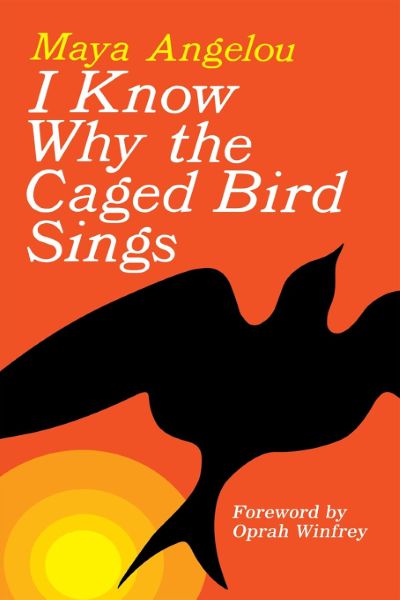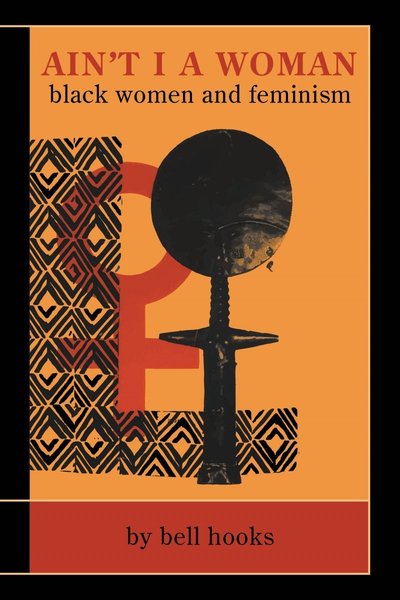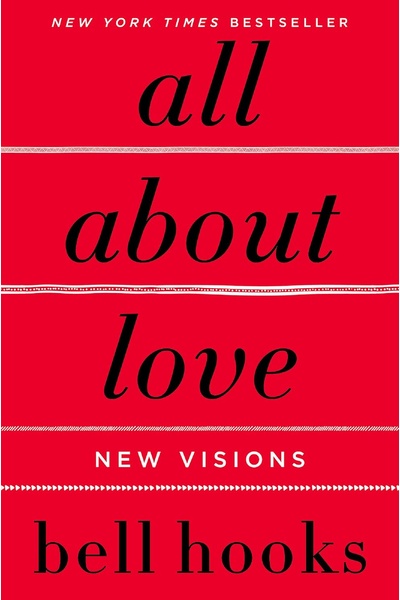I Know Why the Caged Bird Sings
Maya Angelou's 1969 autobiography is a milestone work that changed the literary landscape—it not only pioneered how literature discusses issues of racism, sexism, and identity, but more importantly, it redefined our understanding of the autobiographical genre itself. In this work, Angelou explores her experiences growing up in Arkansas until becoming a mother at 16. Though sometimes heavy reading (Angelou's brief narrative of childhood sexual assault runs throughout the book), 'I Know Why the Caged Bird Sings' introduced new ways of writing women's lives to the literary world.

📝 Book Review
Maya Angelou’s (1928-2014) autobiography “I Know Why the Caged Bird Sings” (1969) stands as one of the 20th century’s most important feminist and anti-racist literary works. As the opening volume of Angelou’s seven-part autobiographical series, this work not only chronicles a Black woman’s coming-of-age experience in the segregated South but more importantly redefines autobiographical writing through revolutionary honesty and literary innovation, becoming a foundational text of intersectional feminist literature.
Textual Structure and Narrative Innovation
“I Know Why the Caged Bird Sings” employs a unique non-linear narrative structure, weaving Margaret Johnson’s (Angelou’s birth name) experiences from age 3 to 17 into a complex tapestry of life. This narrative approach breaks from traditional autobiographical chronology, instead constructing chapters around key psychological and social turning points, with each segment possessing the independent completeness of poetry while forming organic connections with the overall narrative.
Angelou’s narrative voice flexibly shifts between adult retrospection and childhood experience, creating a unique “double perspective.” As the adult narrator, she reexamines childhood experiences with a poet’s sensitivity and activist’s insight; as the child protagonist, she maintains that original confusion, fear, and hope. This dual voice gives the text both documentary-like authenticity and the artistic depth of literary work.
The book’s language usage is equally revolutionary. Angelou fuses oral tradition, dialect, formal English, and poetic language, creating a unique literary language. This linguistic strategy not only reflects the cultural richness of Black communities but also challenges mainstream literature’s monopoly on “standard” English. Her use of oral tradition, particularly the incorporation of Black church tradition and folk tales, injected new vitality into American literature.
Intersectional Oppression of Race and Gender
As an important text of intersectional feminism, “I Know Why the Caged Bird Sings” profoundly reveals how racial and gender oppression interweave in Black women’s lives. Through Margaret’s coming-of-age experience, Angelou demonstrates the multiple predicaments faced by Black girls under segregation.
On the racial level, the book details the living reality of Black communities in the Jim Crow South. From white dentists refusing to treat Black children to racist remarks by white officials at Black graduation ceremonies, Angelou records the daily violence of institutionalized racism through a child’s eyes. These seemingly ordinary discriminatory events become amplified in child perception as threats to survival, revealing how racism shapes Black self-perception from the earliest ages.
On the gender level, Margaret’s experiences reveal the particular predicaments faced by Black girls. She must cope with both racial discrimination and the constraints of gender expectations. The book’s description of Margaret’s sexual assault by her mother’s boyfriend became one of the first works in American literary history to deal so directly with childhood sexual violence. This traumatic experience and its aftermath—Margaret’s choice of silence, believing her voice possessed deadly power—symbolically represents how society suppresses Black women’s voices.
More importantly, Angelou demonstrates how racial and gender oppression mutually reinforce each other. As a Black woman, Margaret is neither accepted by white society nor fully conforming to traditional expectations for women in Black communities. Her intelligence and independent spirit make her seem out of place in both worlds—this marginalized position becomes both a source of pain and the foundation of her unique perspective.
Body Politics and Feminist Consciousness
“I Know Why the Caged Bird Sings” makes pioneering contributions to discussions of body politics. Angelou doesn’t avoid discussions of the body, sexual violence, and sexual awakening—this was extremely bold for its time. She understands the body as a site of political struggle, where Black women’s bodies are both objects of oppression and tools of resistance.
The book’s treatment of sexual violence deserves particular attention. Angelou neither avoids the reality of trauma nor permanently defines Margaret as a victim. Instead, she presents a complex recovery process in which Margaret gradually regains control over her own body and voice. This treatment provides important models for later trauma literature and feminist writing.
The book’s ending—Margaret giving birth to a son at 17—is often simply understood as a teenage pregnancy problem. But Angelou’s treatment is more complex and positive. Through becoming a mother, Margaret redefines her relationship with her body, transforming trauma into creative power. This conclusion is not a sign of failure but a declaration of autonomy: Margaret chose her own path, refusing to be defined by society’s expectations.
The Politics of Language, Silence, and Voice
One of the central themes of “I Know Why the Caged Bird Sings” is the political significance of language and silence. Margaret’s choice of silence after experiencing sexual assault is not only a response to personal trauma but also symbolizes how society suppresses marginalized groups’ voices. Through this symbolism, Angelou reveals the unequal distribution of linguistic power.
However, silence in the book is not only a result of oppression but also a strategy of resistance. During her silent period, Margaret develops her inner world through reading and internal dialogue. Her love for works by Shakespeare, Dickens, and Black poet Paul Laurence Dunbar provides her with alternative linguistic resources. This literary education becomes the foundation for her regaining her voice.
The book’s emphasis on oral tradition also embodies the political significance of language. Angelou records the rich oral culture of Black communities—from church sermons to street corner storytelling—these are cultural forms ignored or devalued by mainstream culture. By integrating these oral traditions into literary writing, Angelou challenges cultural hierarchies and advocates for the value of linguistic diversity.
Poetry occupies a special place in Margaret’s life, particularly her love for Paul Laurence Dunbar’s poetry. The line “I know why the caged bird sings” from Dunbar’s poem “Sympathy” becomes the book’s title and central metaphor. The caged bird’s song is both a yearning for freedom and protest against reality, symbolizing the oppressed’s efforts to express themselves through art and literature.
Community, Family, and Female Role Models
Although “I Know Why the Caged Bird Sings” records the reality of racial and gender oppression, it equally demonstrates the resilience and mutual support of Black communities. Angelou’s Stamps, Arkansas Black community, though impoverished and marginalized, is full of cultural vitality and interpersonal care.
Grandmother Annie Henderson (called “Momma”) is one of the book’s most important female role models. As a store owner and community leader, Momma embodies Black women’s resilience and wisdom. Her religious faith and moral principles provide Margaret with a stable foundation, while her business acumen and community influence also demonstrate Black women’s capabilities and value.
Angelou’s portrayal of various female role models reveals the diversity of Black women’s experiences. From the strict grandmother to the charming but unstable mother Vivian, from independent Mrs. Bertha Flowers to strong neighbors, these female characters collectively form a complex women’s network, providing Margaret with different reference models for growth.
Mrs. Bertha Flowers’ image deserves particular attention. As an educated Black woman in town, she becomes Margaret’s spiritual mentor, helping her rediscover the power of language. Mrs. Flowers’ love of literature and elegant demeanor provide Margaret with a different feminine possibility—an image of Black womanhood that is both dignified and intelligent.
Literary Historical Significance and Influence
“I Know Why the Caged Bird Sings” holds milestone significance in American literary history. It is the first modern autobiography written by a Black woman to gain widespread recognition, paving the way for later Black women’s writing. Angelou’s success proved that marginalized groups’ experiences possess universal literary value, challenging traditional definitions of literary canon.
The work’s innovation in autobiographical genre is equally important. Angelou integrates poetic techniques into prose writing, creating a unique literary style. Her non-linear treatment of memory, use of symbolism and metaphor, and incorporation of oral tradition all provide new possibilities for autobiographical writing.
“I Know Why the Caged Bird Sings” is also a practical model of early intersectional feminist theory. Although Kimberlé Crenshaw didn’t formally propose the concept of “intersectionality” until 1989, Angelou had already demonstrated through literary practice twenty years earlier how race, gender, class, and other identities intersect to influence personal experience.
The work’s impact on education cannot be ignored. It became required reading in American high school and college curricula, providing countless students with a window to understand racism, sexism, and social inequality. It also sparked intense discussions about educational content, with some conservative groups attempting to ban the book due to its direct descriptions of sexual violence and racial issues.
Trauma Narrative and Recovery
“I Know Why the Caged Bird Sings” occupies an important position in the development of trauma literature. Angelou’s treatment of childhood sexual assault experiences neither avoids the seriousness of trauma nor allows trauma to completely define the protagonist’s life. This balanced treatment provides important reference for later trauma narratives.
The book’s description of post-traumatic stress responses—particularly Margaret’s period of choosing silence—is psychologically accurate. Angelou demonstrates how trauma affects linguistic ability, interpersonal relationships, and self-perception, but she also emphasizes the resilience of the human spirit and the possibility of recovery.
Margaret’s recovery process is not linear but full of setbacks and repetitions. This realistic treatment avoids simple inspirational narratives, instead showing the true complexity of recovery processes. Literature, education, interpersonal care, and personal growth all play important roles in this process.
Contemporary Significance and Continuing Influence
More than half a century later, “I Know Why the Caged Bird Sings” remains significantly relevant today. In the context of the #MeToo movement, Angelou’s confrontation with sexual violence and emphasis on survivors’ voices seems particularly important. The process she demonstrates from trauma to recovery provides hope and reference for contemporary trauma survivors.
Against the backdrop of current tense American race relations, this work’s detailed description of racism’s daily manifestations still holds contemporary relevance. Angelou’s experiences of racial discrimination—from subtle bias to open hostility—still echo in contemporary American society.
“I Know Why the Caged Bird Sings’” focus on educational equality and literary diversity is also closely related to contemporary educational reform discussions. Angelou’s emphasis on the importance of reading and literary education for personal development remains relevant in current discussions about educational resource allocation.
The work’s contribution to women’s writing tradition has also gained new recognition in contemporary times. As more women of color writers gain recognition, Angelou’s position as a pioneer becomes clearer. She paved the way for later writers like Toni Morrison, Alice Walker, and Zadie Smith.
Literary Technique and Artistic Achievement
From a purely literary perspective, “I Know Why the Caged Bird Sings” demonstrates Angelou’s sensitivity as a poet and skill as a narrator. Her selection and arrangement of details create strong visual and emotional effects. Whether describing Southern landscapes or characterizing personalities, all show mature literary technique.
Angelou’s handling of dialogue is particularly excellent. She accurately records the linguistic characteristics of different social groups, from Black dialect to white Southern accents, from children’s innocence to adults’ complexity. This linguistic diversity not only increases the work’s authenticity but also demonstrates American society’s linguistic layers.
The book’s use of symbolism and metaphor also deserves attention. From the caged bird in the title to repeatedly appearing bridge imagery to descriptions of light and shadow, these literary devices add poetry and depth to the work. Angelou successfully transforms personal experience into literary symbols with universal significance.
Enduring Legacy and Universal Themes
“I Know Why the Caged Bird Sings” is not only an important social document but also an outstanding literary work. It records the truth of an era with honest and poetic language, while also demonstrating the resilience and creativity of the human spirit. This work’s continuing influence proves the trans-temporal value of excellent literary works, and it will continue to provide readers with understanding, empathy, and hope.
Through “I Know Why the Caged Bird Sings,” Maya Angelou not only tells her own story but more importantly opens up space for expression for all marginalized voices, proving that everyone’s experience has its unique value and meaning. This insistence on human dignity and faith in literature’s power makes this work a gem of 20th-century American literature while providing continuing inspiration and strength for 21st-century readers.
Conclusion: From Silence to Song
The transformation depicted in Angelou’s autobiography—from the traumatized child who chooses silence to the young woman who finds her voice—serves as both personal narrative and universal metaphor. The caged bird’s song represents not just individual recovery but collective resistance, not just personal expression but political action.
Angelou’s achievement lies in creating a work that is simultaneously deeply personal and broadly political, intimately individual and universally human. She demonstrates that literature can serve as both mirror and lamp—reflecting the realities of oppression while illuminating pathways toward liberation. Her courage in breaking silence about sexual assault, racism, and poverty opened doors for countless other writers and activists to speak their own truths.
The book’s enduring power stems from its recognition that authentic voice emerges not despite adversity but through the struggle with it. Margaret’s journey from silence to speech becomes a template for understanding how marginalized individuals and communities can reclaim agency and create meaning from trauma. In this sense, “I Know Why the Caged Bird Sings” remains not just a classic of American literature but a continuing source of hope and guidance for anyone seeking to transform pain into power, silence into song.
Discussion
读书讨论
分享您对这本书的感想和看法,与其他读者交流见解
加入讨论
分享您对这本书的感想和看法,与其他读者交流见解
加载评论中...
Book Info
Related Topics
🛒 Get This Book
 Buy on Amazon
Buy on Amazon Related Books
读书讨论
分享您对这本书的感想和看法,与其他读者交流见解
加入讨论
分享您对这本书的感想和看法,与其他读者交流见解
加载评论中...

